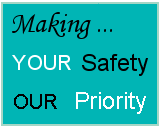A New Dental Age
Richard Mason CMIOSH
In response to demands from patients and pressure from regulating bodies to respond to patients' demands, dental practices all over the UK are now offering early morning, late night and weekend appointments. This is particularly true in orthodontic practices, as schools place increasing pressure on pupils and parents not to take appointments during school hours. On the whole, patients expect to make appointments at times to suit their work responsibilities, making the requirement to balance the needs of patients and the dental team more complex than ever before.
It is the prerogative of practice owners to set their opening hours. It is, however, prudent to do this after careful consideration of the impact the hours set will have on everyone concerned. If the hours are not suitable for patients, they will become confrontational toward staff, if they are not suitable for staff you will find it difficult to attract and retain them. Employers need to balance needs based on the fact that dental teams cannot keep on giving more and more, weighed against patients comparing the dental services provided by small family practices with those of the large corporate, high street health care providers and with the medical profession, whose contractual requirements to offer more out-of-hours appointments have recently been high in the new agenda.
As dental teams become larger, there is the scope to increase opening hours without increasing the working hours of individual dental professionals. Every dental business should review its operations on a regular basis to ensure they are providing optimum levels of care for patients and employees alike. To take the business forward they need to recognise the needs they should meet by gathering the views of those concerned and using them proactively to strike a happy balance. What does your practice do to strike this balance?
What patients want
Research indicates that in general the purchasers of dental services have a strong preference toward being regarded as 'patients' rather than as 'customers'. For this reason the term 'patient' will be the preferred language in this text.
Most businesses have exactly the same aim - to make money. The way to achieve this is to satisfy patients. Good customer care creates a satisfied patient base. Satisfied patients make repeat visits and success follows.
Non-clinical patient care has two main functions:
- To ensure that we satisfy the patient
- To identify and correct shortcomings in our services swiftly
The development of quality non-clinical patient care measures requires you to:
- Recognise the needs of staff and patients
- Define what needs to be done to meet those needs
- Plan the procedures and services to meet the needs identified
- Develop team skills and understanding of team and patients' needs
- Measure results
Excellent non-clinical patient service
Patients immediate impressions when arriving at a modern practice with audio visuals in the waiting area, a clean, light and bright reception area at which a friendly approachable receptionist waits to greet them can be the first step in rewriting patients' internal scripts about dental visits by providing them with a good impression: meeting the needs and exceeding their expectations and making them feel welcome, excited and valued.
Customer service is crucial to the growth of any business. If patients do not get the service that they desire they will go somewhere else. We can all play a role in delivering excellent patient service, for example.
First impressions count
The first impression sets the stage for the 'patient experience'. The first impression can come from a phone call, an email, or a visit to the practice. Make sure you reach out to patients, introduce yourself, be positive and be willing to listen to them.
Human contact
Email can be a convenient way to communicate with patients, but don't hide behind email. Many patients still prefer to talk with you, so be willing to pick up the phone and return phone calls.
Treat patients how you would like to be treated in their place
It's the golden rule - do unto others as you would be done by. Be sure that you treat patients with the same respect and courtesy that you would like to encounter. When a patient leaves the practice ask yourself: "If I were treated like that, would I return?"
Be proactive - empathise
Don't just wait until someone asks you for help, be willing to be proactive and ask your patients how you may be of service to them.
It's not what you say it's the way that you say it!
This is true whether it's a phone call or a conversation in person; make sure that you keep your tone friendly yet professional. We can often come across as having been interrupted, disturbed or angry just by the tone of our response. Always smile when responding, this will ensure that your tone comes across as pleasant and helpful.
Be willing to find the answers to patients' questions
Patients deserves solutions for their questions and concerns and it's important to always be honest, but never say "I don't know" unless you follow it with "However, I will find out for you."
Own up to mistakes
Mistakes happen. We will never be 100 per cent perfect, so always be willing to own up to your mistakes, apologise and rectify the situation. Let the patient know that you will take care of them, reassure them so that they are willing to return in the future.
Excellent patient service can only work its magic if people visit in the first place. Good marketing is also good patient service. It can make our 'products' attractive and welcoming to different types of patient.
|
Safety Priorities highlight safety issues in the dental surgery - click here to watch a comical short film



|

